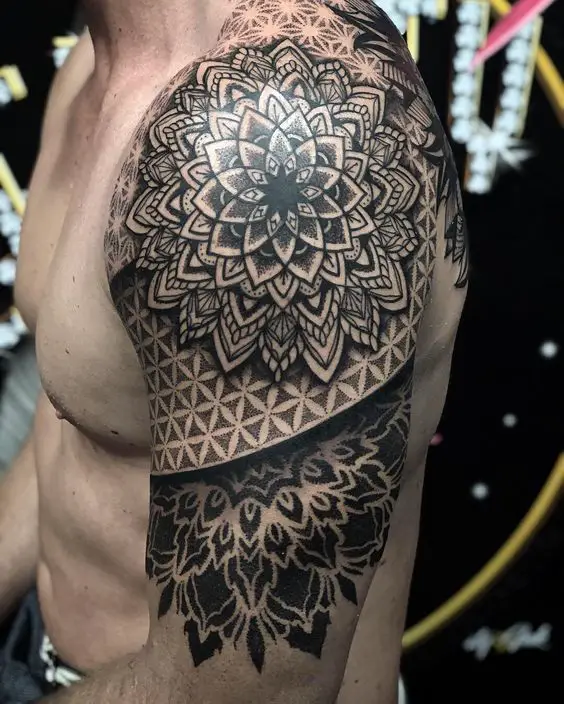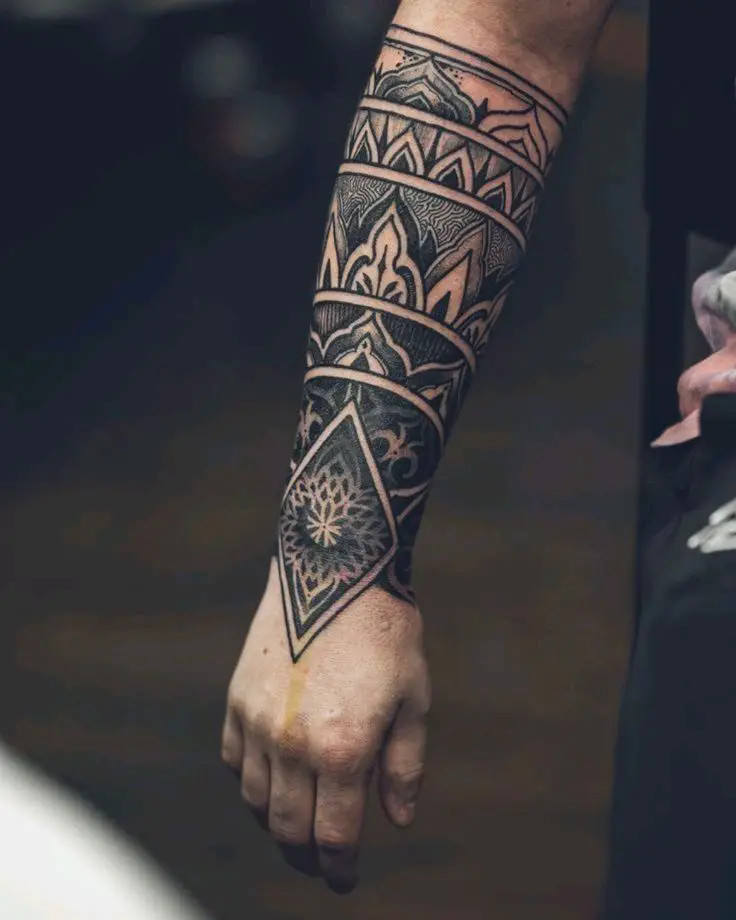Symbols of Balance and Spirituality

Mandala tattoos have become extremely popular in recent years due to their intricate beauty and the deep meanings they carry. Originating in Eastern religious and cultural traditions, mandalas are known for their elaborate symmetry and geometry that appeal to the eye and soothe the mind. In this article, we will explore the origin of mandala tattoos, their meanings, as well as the reasons why people choose to decorate their skin with these fascinating designs.
The Origin and Meaning of Mandalas
The word "mandala" comes from Sanskrit and means "circle". In Buddhist and Hindu traditions, mandalas are used as spiritual and ritual tools. They are used in meditation and religious practices to represent the universe and help find inner balance and enlightenment. Mandalas are drawn with perfect symmetry, usually in a circular shape, symbolizing harmony and unity.
Features of Mandala Tattoos
Symmetry : Mandala tattoos are known for their perfect symmetry. Each element of the design is balanced and arranged evenly around a central point, creating a harmonious visual effect.
Elaborate Details : Another distinctive aspect of mandala tattoos is the high level of detail. These tattoos are composed of multiple layers of shapes and motifs, each layer adding complexity and depth to the design.
Geometric Elements : Mandalas are often constructed using precise geometric shapes such as circles, triangles, and squares, which are meticulously arranged to create a cohesive and aesthetic design.
Spiritual Symbolism : Mandalas are loaded with spiritual symbolism. They can represent the individual's inner journey, connection with the universe, and the search for balance and harmony.
Why Choose a Mandala Tattoo?
Aesthetic Beauty : Mandalas are incredibly beautiful visually. Their intricate and symmetrical designs draw the eye and offer a distinct aesthetic, perfect for those who appreciate detailed art.
Personal Meaning : For many people, mandalas have a deep personal meaning. They can symbolize the search for inner balance, connection with spirituality or a process of personal healing.
Versatility : Mandala tattoos are extremely versatile and can be adapted to fit any part of the body. Whether it's a small design on the wrist or a large one on the back, mandalas look spectacular in any size.
Relaxation and Meditation : The process of tattooing a mandala can be considered therapeutic. Like their traditional creation, drawing a mandala on the skin can induce a state of relaxation and meditation for both artist and client.
Popular Examples of Mandala Tattoos
Floral Mandalas : These combine traditional mandala elements with flower shapes, creating a design that is both natural and geometric. They are popular because of their delicate and feminine appearance.
Geometric Mandalas : These tattoos place great emphasis on geometric shapes and precise symmetry. They are ideal for those who appreciate order and structure.
Abstract Mandalas : For those who want a unique and personalized design, abstract mandalas offer the opportunity to combine different motifs and elements to create a tattoo that is truly unique.
Spiritual Inspiration Mandalas : These include symbols and motifs specific to religious or spiritual traditions, such as lotuses, the third eye, or various deities, bringing a deep spiritual meaning to the tattoo.
Conclusion
Mandala tattoos are more than just designs on the skin; they are complex representations of harmony, balance and spirituality. Choosing a mandala tattoo can be a beautiful and meaningful way to express deep aspects of your own identity and personal journey. Regardless of the design chosen, a mandala tattoo will always be a fascinating and inspiring piece of art.
If you want a tattoo now is the time Artists | TAT-TOO.tv
If you want to see the events in the world of tattoos Home | TAT-TOO.events


















